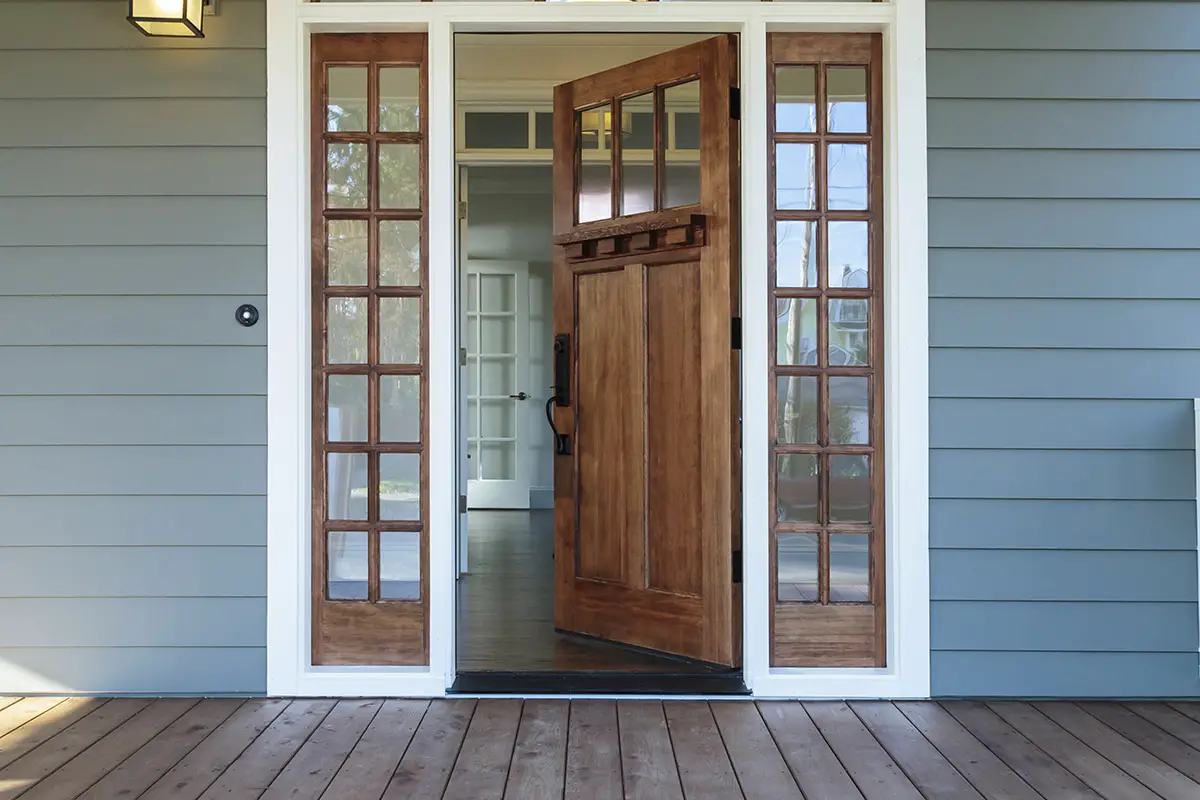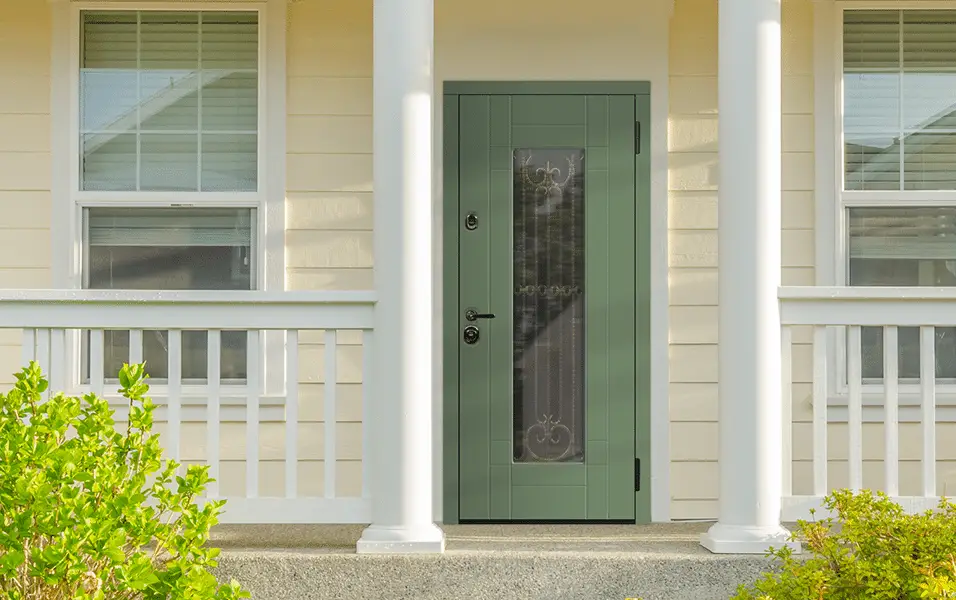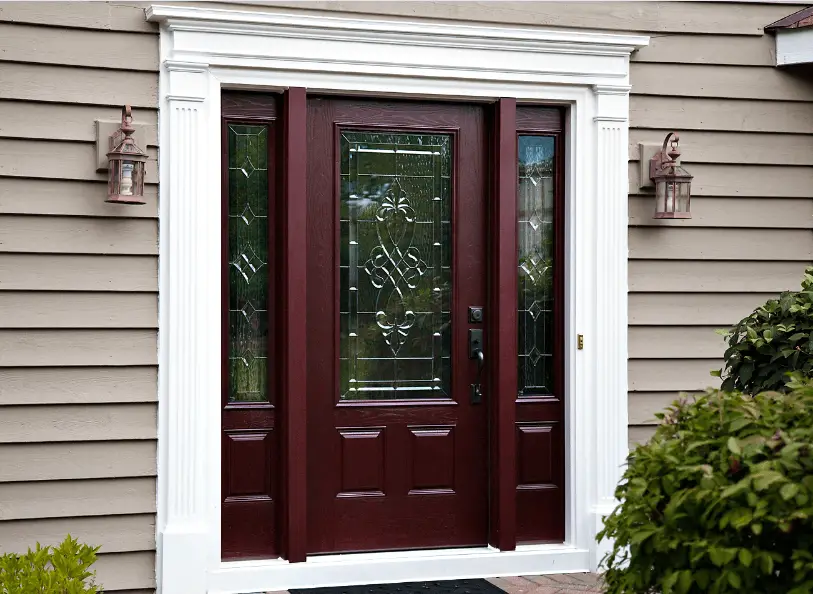How To Clean A Stained Exterior Wood Door
Introduction
How To Clean A Stained Exterior Wood Door: A stained exterior wood door can be a stunning focal point of your home’s facade, but over time, exposure to the elements and everyday wear and tear can leave it looking tired and stained. However, fear not, as with the right techniques and a little elbow grease, you can restore the beauty of your wood door to its former glory. In this comprehensive guide on “How To Clean A Stained Exterior Wood Door,” we will walk you through the step-by-step process to rejuvenate your door and give it a fresh, inviting appearance.
From identifying the stains and understanding the type of wood to selecting the right cleaning products and techniques, this guide will provide you with the knowledge and tips you need to tackle this project with confidence. Whether your wood door is stained with watermarks, mildew, or just general grime, we’ve got you covered.
Investing time and care into cleaning and maintaining your exterior wood door not only enhances your home’s curb appeal but also prolongs the life of this valuable asset. So, let’s embark on this journey together and discover the secrets to a beautifully clean and welcoming wood door.
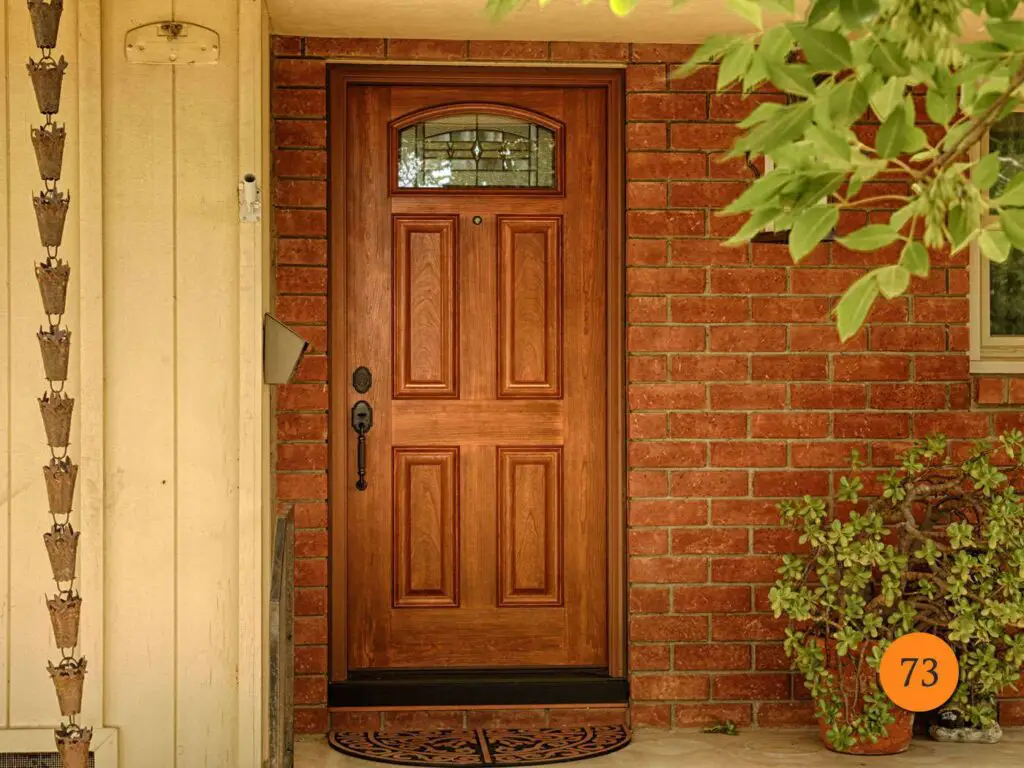
What can I use to clean stained wood doors?
Using a soft rag, duster, or vacuum with a nozzle attachment, dust the door gently to remove loose dirt and dust. Mix equal parts water with either gentle dish soap or vinegar. Scrub the door lightly using a soft sponge or cloth. Stained Doors: Use furniture wax or polish to wipe down the door for an extra sine.
Cleaning stained wood doors requires the right materials and techniques to preserve their finish and beauty. One of the most effective cleaners for stained wood doors is a mixture of mild dish soap and warm water. Mix a few drops of dish soap in a bucket of warm water, dampen a soft cloth or sponge with the solution, and gently wipe down the door. This will remove surface dirt and grime without damaging the wood or the stain.
Another option is a commercial wood cleaner specifically designed for stained wood surfaces. These cleaners are formulated to clean without harming the finish. Always follow the manufacturer’s instructions when using commercial wood cleaners.
For tougher stains or buildup, you can try a mixture of white vinegar and water. Mix equal parts of water and vinegar, dampen a cloth or sponge, and gently scrub the stained areas. Be sure to rinse thoroughly with clean water afterward.
Avoid using abrasive materials like steel wool, harsh chemicals, or bleach, as they can damage the wood and the stain finish. Regular maintenance and gentle cleaning will help keep your stained wood doors looking their best for years to come.
What is the best cleaner for stained wood?
Mix equal parts white vinegar and olive oil in a bowl and saturate the wood stain using a paper towel. Let the solution sit for an hour to release trapped moisture in the pores. Wipe off the residue with a soft cloth and buff the wood until the stained area blends in with the natural wood grain.
The best cleaner for stained wood depends on the type of stain and the finish you’re dealing with. For general cleaning and maintenance, a mild dish soap and warm water solution is often the safest and most effective choice. It is gentle on the wood and won’t harm the stain finish.
Commercial wood cleaners designed specifically for stained wood are also a good option. These products are formulated to clean and protect the wood surface without damaging the stain. Always follow the manufacturer’s instructions for the best results.
If you prefer a natural option, a mixture of white vinegar and water in equal parts can be effective for cleaning stained wood. Vinegar is mildly acidic and can help break down dirt and grime. Remember to rinse thoroughly with clean water after using vinegar to prevent any lingering odor.
Ultimately, the best cleaner for stained wood is one that is safe for the type of stain and finish you have, so always check manufacturer recommendations and test a small, inconspicuous area before applying any cleaner to the entire surface.
What liquid is used to clean wooden doors?
Mix equal parts water with gentle dish soap or vinegar and lightly scrub the door using a soft sponge or cloth. If the door is wood, make sure to wipe the door in the direction of the grain. Dry with a heavy duty paper towel or dry cloth. Clean your door fixtures using commercial cleaner.
When cleaning wooden doors, it’s essential to use liquids that are gentle on the wood and safe for the finish. The most commonly used liquid for cleaning wooden doors is a mixture of mild dish soap and warm water. This solution effectively removes dirt and grime without causing damage to the wood or its finish.
To create this cleaning solution, simply mix a few drops of mild dish soap with warm water in a bucket. Dip a soft cloth or sponge into the soapy water, wring it out so that it’s damp but not soaking wet, and then use it to wipe down the wooden door. After cleaning, make sure to rinse the door with clean water and wipe it dry with a clean, dry cloth to prevent water spots.
While this soap and water solution is ideal for regular cleaning, you can also consider using a commercial wood cleaner or a mixture of white vinegar and water for more stubborn stains or buildup. Just ensure that whatever liquid you choose is safe for your specific wood and finish type.
What is the best natural wood cleaner?
Ask any green-living expert or organic devotee and they’ll tell you that the best natural cleaning products are regular white vinegar or baking soda with a little lemon or orange thrown in. “Truly the best way to clean wood floors is with simple white vinegar,” DiPrima says.
When it comes to natural wood cleaners, there are several options that can effectively clean and maintain wooden surfaces. One of the best natural wood cleaners is a mixture of white vinegar and water. White vinegar’s mild acidity helps break down dirt and grime, making it an excellent choice for cleaning wooden doors. Mix equal parts of water and white vinegar, dampen a cloth or sponge, and gently wipe down the wood. Be sure to rinse with clean water and dry the surface afterward.
Another natural option is a mixture of olive oil and lemon juice. Mix one part lemon juice with two parts olive oil to create a natural wood cleaner and polish. This solution not only cleans but also adds shine and nourishment to the wood. Apply it sparingly to a cloth, rub it onto the wood, and then buff it to a shine with a clean, dry cloth.
Baking soda can also be used as a natural abrasive cleaner for tougher stains on wood. Make a paste by mixing baking soda with a small amount of water, apply it to the stained area, and gently scrub with a soft cloth or sponge.
In summary, the best natural wood cleaner depends on your specific needs, but options like white vinegar and water, olive oil and lemon juice, or baking soda are effective and environmentally friendly choices for cleaning and maintaining wooden doors. Always remember to test a small area first to ensure compatibility with your wood finish.
How do you shine stained wood?
- Step 1: Prepare Wax. Put a spoonful of wood furniture wax, about the size of a golf ball, in a square of 100% cotton fabric.
- Step 2: Wax and Wipe. Rub the wax-saturated fabric on the surface of the furniture, one small area at a time, until the surface dulls.
- Step 3: Polish and Buff.
- Step 4: Repeat and Maintain.
To shine stained wood, you can follow these steps:
- Dust the Surface: Before you start, ensure the wood is free of dust and debris. Use a soft, lint-free cloth or a microfiber cloth to gently wipe away any surface dust. Dust can create a dull appearance on stained wood.
- Use a Wood Polish: There are various wood polishes and furniture sprays available on the market. Choose one that’s suitable for your type of wood and finish. Apply the polish sparingly onto a clean, soft cloth.
- Apply the Polish: Gently rub the cloth with the polish in the direction of the wood grain. Avoid using excessive polish, as this can lead to a sticky residue. Apply a thin, even coat.
- Buff the Wood: Using a separate clean, dry cloth, buff the wood in the direction of the grain. This helps distribute the polish evenly and brings out a natural shine. Continue buffing until the wood looks glossy.
- Repeat as Needed: Depending on the condition of the wood, you may need to repeat the process periodically. Regularly dusting and using a wood polish can help maintain the shine of stained wood.
Remember to follow the instructions on the wood polish product, as different products may have specific recommendations. Additionally, avoid using abrasive materials or harsh chemicals, as they can damage the wood’s finish and diminish its shine over time.
What is the best solution for cleaning wood?
Most dirty wood furniture can be brought back to life with any basic neutral pH cleaner like Mr. Clean or Fabuloso, some warm water, and a stack of microfiber towels. Just mix according to directions, then use one microfiber towel to scrub and another to dry.
The best solution for cleaning wood depends on the type of wood, the finish, and the level of cleaning needed. For routine cleaning, a simple mixture of mild dish soap and warm water is often the best solution. Here’s how to use it:
- Mix Solution: Add a few drops of mild dish soap to a bucket of warm water and mix it well.
- Dampen Cloth or Sponge: Dip a soft cloth or sponge into the soapy water, ensuring it’s not too wet, and wring out excess water.
- Clean Gently: Wipe down the wood surface in the direction of the grain, using light pressure. This helps remove dust, dirt, and minor stains.
- Rinse and Dry: After cleaning, rinse the wood with clean water to remove any soap residue. Then, dry the surface with a clean, dry cloth to prevent water spots.
For tougher stains or for restoring older wood, you might need to use specialized wood cleaners or wood restorers. Always follow the manufacturer’s instructions and test in an inconspicuous area first.
What removes stains quickly?
Mix one teaspoon of liquid hand dish washing detergent in two cups of cold water. Dip a white cloth or the brush in this solution and work from the outside edge of the stain toward the center to prevent spreading. Blot or lightly scrub the stain and blot with a dry paper towel to absorb the moisture.
Removing stains quickly depends on the type of stain and the surface. Here are some general tips:
- Act Quickly: The key to stain removal is to address it as soon as possible. The longer a stain sits, the more challenging it can be to remove.
- Blot, Don’t Rub: For liquid stains like spills, gently blot the stain with a clean cloth or paper towel to absorb as much as possible without spreading it.
- Use Appropriate Cleaners: Different stains require different treatments. For example, use a mixture of mild dish soap and water for food stains, while a specialized stain remover might be needed for ink or oil stains.
- Stain-Specific Tips: For common stains like wine or coffee, you can try using club soda or a mixture of vinegar and water. For ink stains, rubbing alcohol can be effective. Always test in an inconspicuous area first.
- Follow Care Labels: If the stained item has care labels (e.g., clothing), follow the recommended cleaning instructions.
- Professional Help: For stubborn or large stains on valuable items like carpets or upholstery, consider professional cleaning services.
Remember that some stains may be permanent, especially on porous materials like certain types of wood. Prevention and quick action are often the best strategies for dealing with stains.
How do you restore a stained wood door?
How to Restain a Wood Front Door with Gel Stain
ONE: Clean the Door.
TWO: Sand the Door.
THREE: Apply Gel Stain to the Door.
FOUR: Remove Excess Gel Stain.
FIVE – Repeat the Gel Stain Process.
SIX – Apply Protective Topcoat.
Restoring a stained wood door can breathe new life into its appearance. Here’s a general guide:
- Assessment: Inspect the door to identify the extent of the damage or wear. Note any cracks, scratches, or areas with faded or peeling stain.
- Clean the Surface: Start by cleaning the door as mentioned in previous answers. Remove dust, dirt, and grime using a mild dish soap and warm water solution. Rinse and dry thoroughly.
- Sand the Door: If there are scratches or rough areas, use fine-grit sandpaper to sand the wood in the direction of the grain. Sanding helps smooth the surface and prepares it for refinishing.
- Repair Damage: Fill any cracks or holes with wood filler, following the product instructions. Sand the repaired areas smooth once the filler has dried.
- Refinishing: Apply a fresh coat of wood stain that matches the original or desired color. Apply the stain evenly in the direction of the grain. Follow the manufacturer’s instructions regarding drying times and the number of coats needed.
- Sealing: After the stain has dried, apply a clear wood sealer or varnish to protect the finish. Apply thin, even coats and allow each coat to dry completely before applying the next.
- Hardware and Final Touches: If you removed any hardware, such as handles and locks, reattach them once the finish is dry. Consider adding a new weatherstripping seal to improve insulation and energy efficiency.
Regular maintenance, including periodic cleaning and resealing, can extend the life of the restored wood door. Following these steps can help you restore the beauty and functionality of your stained wood door.
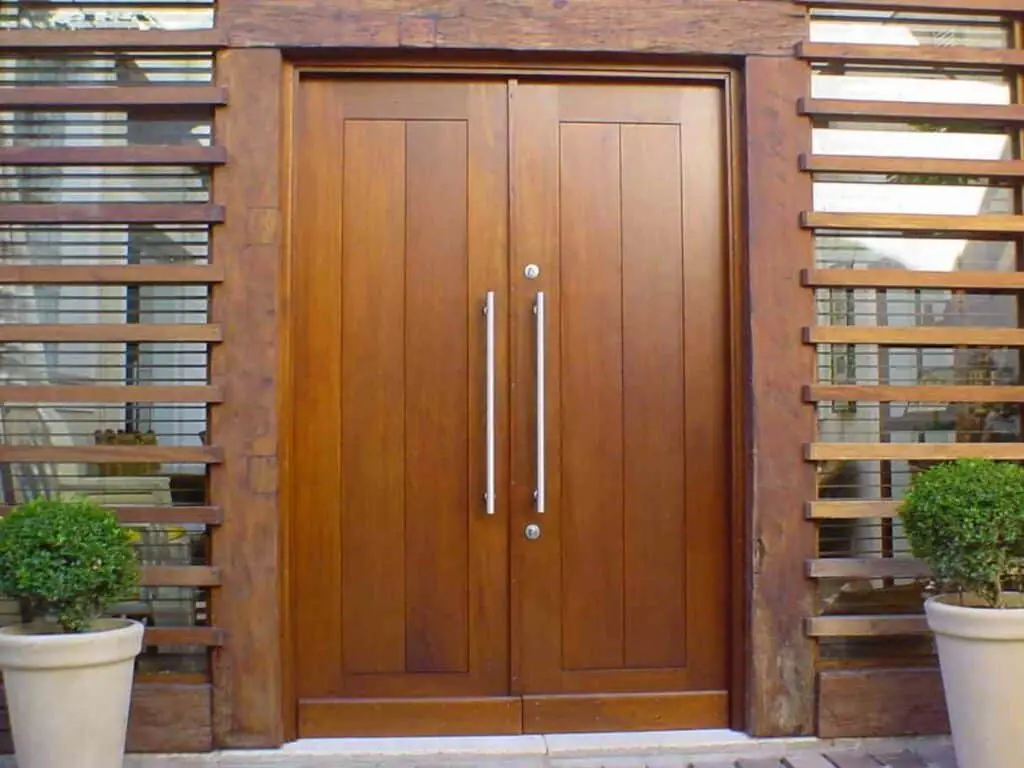
Conclusion
In the world of home improvement, few things are as rewarding as the transformation of a stained exterior wood door into a radiant and inviting entryway. With our step-by-step guide on “How To Clean A Stained Exterior Wood Door,” you’ve learned the secrets to restoring your door’s natural beauty.
Remember, regular maintenance is the key to preserving the elegance of your wood door for years to come. Whether you faced stubborn water stains, mildew, or simple wear and tear, our comprehensive cleaning techniques and tips have empowered you to take action and protect your valuable investment.
As you stand back and admire your revitalized wood door, you not only enhance your home’s curb appeal but also create a warm and welcoming atmosphere for all who cross your threshold. So, take pride in your clean, stained wood door, and revel in the newfound beauty it brings to your home. Thank you for entrusting us with your wood door restoration journey, and here’s to many years of enjoyment and admiration for your stunning exterior wood door.



